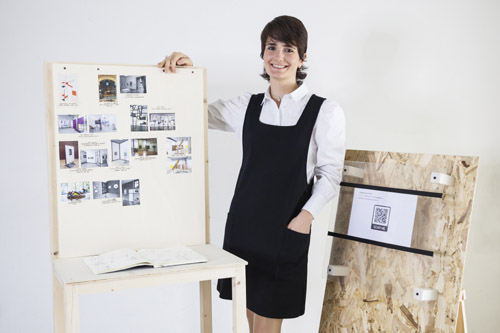“IMAGE CAPITAL. Photography as information technology” is the title of the exhibition currently running at Fondazione MAST in Bologna, curated by Francesco Zanot; and it is free of charge until 8 January 2023. The exhibition project is the result of a more than four-year long collaboration between the artist Armin Linke and Estelle Blaschke, photography historian and researcher at the University of Basilea.
A shared investigation is here proposed, from which the possible meanings and outcomes of photography as capital value emerge. Operational photography today acquires the importance of a strategic good to be protected, preserved and expanded.
Over the last two centuries, we have seen a gradual penetration of photography into every area of society, until it has become a central element of our relationship with the world, due to its countless practical uses adopted in science, culture and industry and as an information technology.
In the exhibition, an interesting evolutionary process takes shape in which instances and practices emerge and demonstrate the involvement of photography as a system for the creation, processing, archiving, protection and exchange of visual information in contemporary digital processes employed in different types of productions.
In the spaces of MAST, the dialogue between artistic practice and scientific method is effectively implemented through the presentation of contemporary photographs, archive images and objects, texts, films and interviews. “Despite their diversity – Zanot argues – all these materials are arranged in the exhibition space on the same level, without hierarchies or priorities, with the aim of offering the viewers a narrative/experience that is as immersive as it is layered”.
The exhibition is divided into six equally important sections (Memory, Protection, Access, Imaging, Mining, Currency); like a structured on different levels hypertext, which the viewer is invited to perform freely.
Access: The image and its textual information combined in a single file: digitalization of photography is the answer to a more efficient organization, transmission and archiving of visual information.
Memory: Photography as a way of visual recording and reproduction. Digital technology and digitalization of images emphasize and strengthen its function as an archiving tool.
Protection: Over time, huge investments have come to the rescue against the potential endangerment of the information contained in the images. Against theft or potential deterioration of data, backups, long-term protection strategies for original material and high-security archives – even to monumental dimensions – have been created, such as Iron Mountain (Pennsylvania).
Mining: Operational photographs are essentially incorporated into production processes, influencing them at the same time: from the extraction of images information, to the development of automatic recognition technologies.
Currency: Image data and metadata are new commodities in cyber capitalism, where images are exploited for various purposes; continuous use and circulation are vital factors in value creation.
Imaging: From photography’s ability to surpass human perceptibility in empirical recording to digital photography, today it is a privileged medium for the faithful reproduction of reality, as in the case of aerial photography and cartography or the recording and analysis of microscopic events in physics, 3D modelling and digital rendering, fundamental in the conception, design and production of objects.
IMAGE CAPITAL is therefore an innovative research project that evolves over the course of 2022 and 2023, and takes three different shapes: a traveling exhibition, an online database (image-capital.com), and a printed book. This is the result of a collective international initiative between Fondazione MAST in Bologna, Museum Folkwang in Essen, Centre Pompidou in Paris and Deutsche Börse Photography Foundation in Frankfurt/Eschborn.
An open and constantly changing investigation, like the very same dynamics it features, from which potential definitions of the value of photography emerge, together with its directly involvement in all kinds of contemporary production processes and capital flows.
Eleonora Reffo
Info:
Armin Linke and Estelle Blaschke, IMAGE CAPITAL. La fotografia come tecnologia dell’informazione
22/09/2022 – 08/01/2023
MAST
via Speranza 42, 40133 Bologna
www.mast.org
 Fortune Magazine, vol. 62, no. 3, September 1960. Courtesy Estelle Blaschke & Armin Linke
Fortune Magazine, vol. 62, no. 3, September 1960. Courtesy Estelle Blaschke & Armin Linke
 Armin Linke, Ter Laak Orchids, 2021. Camera sorting technology. Courtesy the artist and Vistamare Milano/Pescara
Armin Linke, Ter Laak Orchids, 2021. Camera sorting technology. Courtesy the artist and Vistamare Milano/Pescara
 Armin Linke, CERN, Large Hadron Collider (LHC), control room, Geneva, Switzerland, 2019. Courtesy the artist and Vistamare Milano/Pescara
Armin Linke, CERN, Large Hadron Collider (LHC), control room, Geneva, Switzerland, 2019. Courtesy the artist and Vistamare Milano/Pescara
 Armin Linke, Iron Mountain preservation facility, Boyers (PA), USA, 2018. Courtesy the artist and Vistamare Milano/Pescara
Armin Linke, Iron Mountain preservation facility, Boyers (PA), USA, 2018. Courtesy the artist and Vistamare Milano/Pescara

In 2019 she obtained a BA Degree in Painting and Visual Arts at NABA (Milan), where she is finishing her MA degree in Visual Arts and Curatorial Studies. Since last years she has been collaborating with cultural realities outside the major centres. As curator she is involved in the realization of multidisciplinary projects aimed at heterogeneous audiences.






NO COMMENT